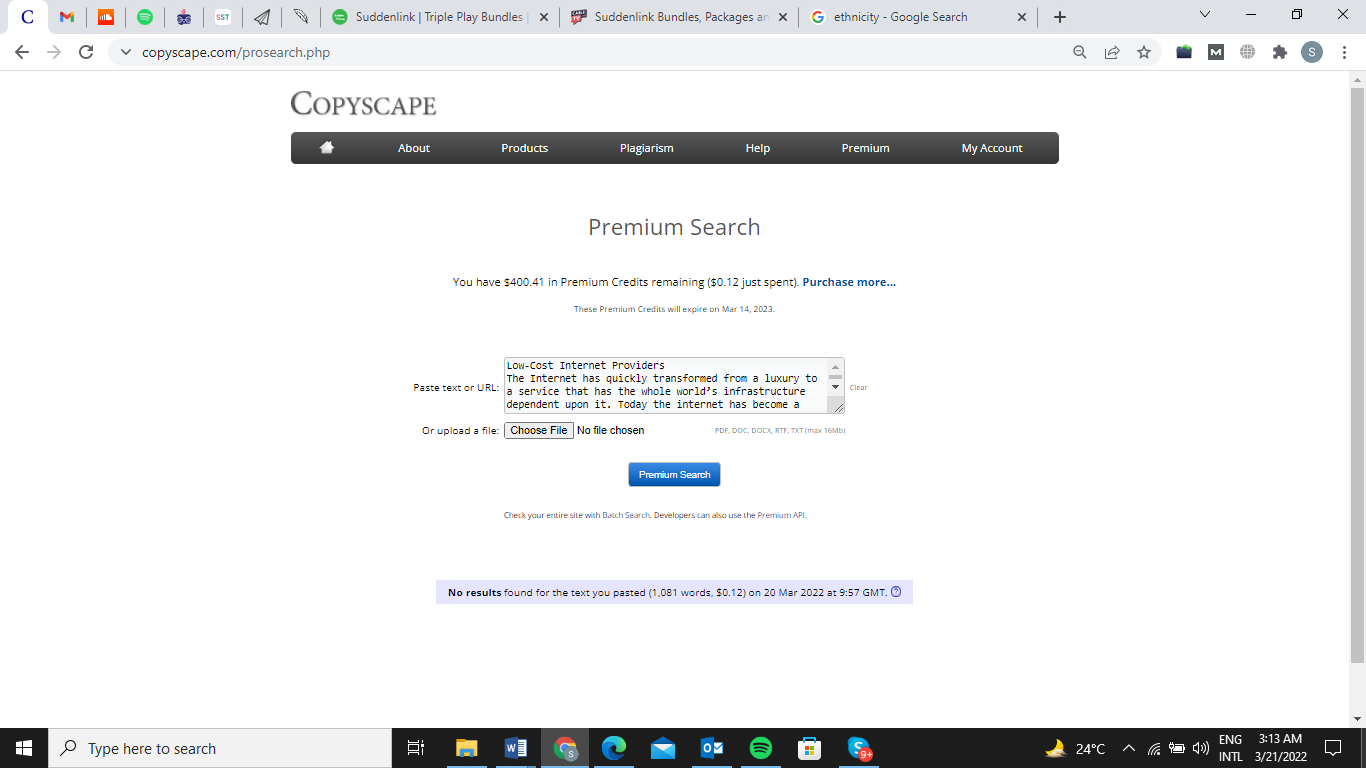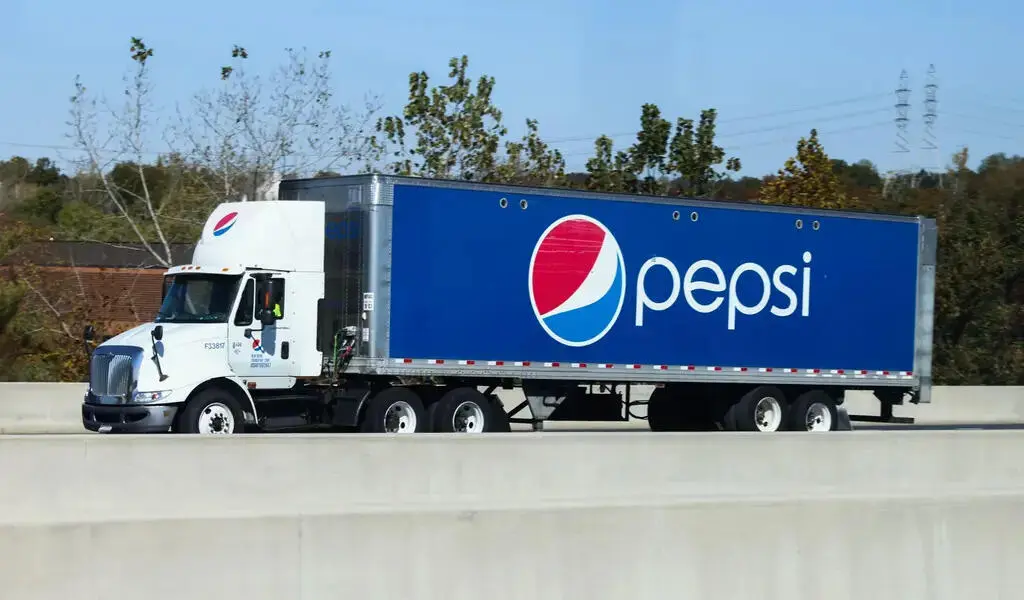Low-Cost Internet Providers

Low-Cost Internet Providers: The Internet has quickly transformed from a luxury to a service that has the whole world’s infrastructure dependent upon it. Today the internet has become a necessity like food or water. Especially after the pandemic, our dependence on the internet has gone off the charts. During the pandemic and the lockdown situation in its aftermath, the whole world came down on its knees because there was no economic or educational activity going on and the health sector was also in distress already.
In these dark times, the internet became the savior of mankind and provide alternatives through which our economic and educational activities were resumed. These alternatives were the web-based mediums that gave birth to new techniques like working from home and online education. These weren’t completely new concepts however, they weren’t that prevalent before the pandemic.
In the aftermath of the pandemic, the whole world started using techniques to work and learn from home. A concept that was limited in scale before, but got worldwide recognition during lockdowns. Not only this, but these new technologies showed how important the internet had become for society. Apart from work and education, there were other fields like e-commerce, which also boomed during the pandemic.
Plus as a result of saving additional expenses, people also started cutting their cable TV connections which were the primary source of entertainment pre-pandemic, and shifting towards internet-based entertainment channels like online TV and streaming apps. Plus not only TV but the closure of the cinema industry also made way for new blockbuster movies to release on these online platforms.
So in a way internet not only became responsible for work activities but now it has also established itself as a solid entertainment medium which many are using today for various fun-filled activities. This incredible ability of the internet to penetrate different fields of life has allowed it to become so deeply rooted in our society.
Seeing the importance of the internet, governments all around the globe are offering grants and financial aids for existing users to remain connected to the internet and for new users to make the internet cost-effective. The most famous one out of these was the EBB or emergency broadband benefit program that allowed users to get a $50 grant for their internet bill.
Internet providers also did their part by reducing the cost, providing discounts, and increasing the footprint of their services. Today internet is not only affordable but is available to many, for example, a provider like Suddenlink has special plans for both its English and Spanish speaking customers. Many Spanish customers face language issues while getting the services. Suddenlink makes sure that all assist their customers in the best possible way and so they offer specials plans for their Spanish customers. For Spanish plans, users can look for Suddenlink en Español.
How Low-Cost Internet Makes Sense Today?
The availability of a low-cost internet would only make sense if we view it as an essential service, which it already has become. Since governments around the world give subsidies on essential services, so has the case with the internet today.
Because today, the internet is responsible for the livelihood and education of a majority of people, through new innovations of working from home and online classes. While on the other hand, current economic crises, job losses, and increased inflation have made people struggle for even the basic necessities.
So it is essential today to provide cost-effective internet which an average citizen can easily afford and continue their work, business, and educational activities. And since all responsibility can’t be put on the government alone, thus many providers have stepped in and are offering economical internet plans to further assist the users in getting a cost-effective and good internet connection.
List of Economical Internet Providers
The below-mentioned list is a round-up of some of the best, well-known, and cost-effective internet providers. They are available in a majority of the United States and have a well-established loyal customer base along with an exceptional quality of service.
Spectrum
Spectrum is the second biggest internet provider in the country as per user base and is available in 41 states. Spectrum is one such provider that offers high-speed internet at a very low cost. Their speed tiers start at 200Mbps. While Spectrum also has a special plan for low-income households that provide them with a good 30Mbps internet at an even lower cost specifically designed for customers with low income. Not only this but all Spectrum’s plans have unlimited data and come without any contract that gives users the option to switch anytime they feel like. Plus all Spectrum internet plans also have a free modem so users also save on the equipment cost.
Cox Communications
Cox Communications is the third-largest cable company but it also has a fair share of internet subscribers as well. Similarly, Cox has a wide range of flexible internet plans that range in speeds and prices for different types of users.
Apart from all this Cox also has a special plan for students to get cost-effective internet service in order to use that in their educational activities this is known as CoxConnect2Compete. Cox is a provider that is available in more than 18 states and is a major internet provider of the country with more than 3.5 million internet subscribers.
Xfinity
Last but certainly not least is the biggest internet provider in the US, Xfinity. It is Comcast’s internet division and with a backing of such a big telecom giant, one can expect only the best services. Not only are the services by Xfinity are exceptional, but they are also cost-effective as well.
Their special plan Xfinity Essentials targets low-income users and provides them with a speed of somewhere between 10 to 50Mbps at an incredibly low cost. Not only that but their cutting-edge wireless gateway is also included in the cost. This makes Xfinity a part of our top three list of most economical service providers.
Final Words
The Internet has become an essential service today as half of the world’s population is using it for various tasks. That is why companies and governments must work together and make the internet even more affordable so that more and more people can benefit from this amazing technology. And there are examples of providers like the ones mentioned above that are providing amazing and reliable internet connections at a very meager cost.

People Are Also Reading:
Windows 11 – How To Install The Google Play Store on Windows 11
NFTs on the Rising Trend: Art Transformation in the Digital Age

News
Trudeau’s Gun Grab Could Cost Taxpayers a Whopping $7 Billion

A recent report indicates that since Trudeau’s announcement of his gun buyback program four years ago, almost none of the banned firearms have been surrendered.
The federal government plans to purchase 2,063 firearm models from retailers following the enactment of Bill C-21, which amends various Acts and introduces certain consequential changes related to firearms. It was granted royal assent on December 15 of last year.
This ban immediately criminalized the actions of federally-licensed firearms owners regarding the purchase, sale, transportation, importation, exportation, or use of hundreds of thousands of rifles and shotguns that were previously legal.
The gun ban focused on what it termed ‘assault-style weapons,’ which are, in reality, traditional semi-automatic rifles and shotguns that have enjoyed popularity among hunters and sport shooters for over a century.
In May 2020, the federal government enacted an Order-in-Council that prohibited 1,500 types of “assault-style” firearms and outlined specific components of the newly banned firearms. Property owners must adhere to the law by October 2023.
Trudeau’s Buyback Hasn’t Happened
“In the announcement regarding the ban, the prime minister stated that the government would seize the prohibited firearms, assuring that their lawful owners would be ‘grandfathered’ or compensated fairly.” “That hasn’t happened,” criminologist Gary Mauser told Rebel News.
Mauser projected expenses ranging from $2.6 billion to $6.7 billion. The figure reflects the compensation costs amounting to $756 million, as outlined by the Parliamentary Budget Office (PBO).
“The projected expenses for gathering the illegal firearms are estimated to range from $1.6 billion to $7 billion.” “This range estimate increases to between $2.647 billion and $7 billion when compensation costs to owners are factored in,” Mauser stated.
Figures requested by Conservative MP Shannon Stubbs concerning firearms prohibited due to the May 1, 2020 Order In Council reveal that $72 million has been allocated to the firearm “buyback” program, yet not a single firearm has been confiscated to date.
In a recent revelation, Public Safety Canada disclosed that the federal government allocated a staggering $41,094,556, as prompted by an order paper question from Conservative Senator Don Plett last September, yet yielded no tangible outcomes.
An internal memo from late 2019 revealed that the Liberals projected their politically motivated harassment would incur a cost of $1.8 billion.
Enforcement efforts Questioned
By December 2023, estimates from TheGunBlog.ca indicate that the Liberals and RCMP had incurred or were responsible for approximately $30 million in personnel expenses related to the enforcement efforts. The union representing the police service previously stated that the effort to confiscate firearms is a “misdirected effort” aimed at ensuring public safety.
“This action diverts crucial personnel, resources, and funding from tackling the more pressing and escalating issue of criminal use of illegal firearms,” stated the National Police Federation (NPF).
The Canadian Sporting Arms & Ammunition Association (CSAAA), representing firearms retailers, has stated it will have “zero involvement” in the confiscation of these firearms. Even Canada Post held back from providing assistance due to safety concerns.
The consultant previously assessed that retailers are sitting on almost $1 billion worth of inventory that cannot be sold or returned to suppliers because of the Order-In-Council.
“Despite the ongoing confusion surrounding the ban, after four years, we ought to be able to address one crucial question.” Has the prohibition enhanced safety for Canadians? Mauser asks.
Illegally Obtained Firearms are the Problem
Statistics Canada reports a 10% increase in firearm-related violent crime between 2020 and 2022, rising from 12,614 incidents to 13,937 incidents. In that timeframe, the incidence of firearm-related violent crime increased from 33.7 incidents per 100,000 population in 2021 to 36.7 incidents the subsequent year.
“This marks the highest rate documented since the collection of comparable data began in 2009,” the criminologist explains.
Supplementary DataData indicates that firearm homicides have risen since 2020. “The issue lies not with lawfully-held firearms,” Mauser stated.
Firearms that have been banned under the Order-in-Council continue to be securely stored in the safes of their lawful owners. The individuals underwent a thorough vetting process by the RCMP and are subject to nightly monitoring to ensure there are no infractions that could pose a risk to public safety.
“The firearms involved in homicides were seldom legally owned weapons wielded by their rightful owners,” Mauser continues. The number of offenses linked to organized crime has surged from 4,810 in 2016 to a staggering 13,056 in 2020.
“If those in power … aim to diminish crime and enhance public safety, they ought to implement strategies that effectively focus on offenders and utilize our limited tax resources judiciously to reach these objectives,” he stated.
Related News:
Millennials in Canada Have Turned their Backs on Justin Trudeau
Millennials in Canada Have Turned their Backs on Justin Trudeau
World
Russian Arms Dealer Viktor Bout Back in Business After Biden Prisoner Exchange

Viktor Bout, the infamous Russian arms dealer who was exchanged two years ago for Brittney Griner by President Biden, has reportedly returned to arms trading, as detailed in a report by the Wall Street Journal.
The Wall Street Journal has revealed that Vikto Bout, infamously dubbed the “merchant of death,” is seeking to facilitate the sale of small arms to the Houthis. A report indicates that Houthi representatives met with Bout in Moscow in August to discuss the acquisition of $10 million in automatic weapons.
Nonetheless, the anticipated arms deal remains unfulfilled, as indicated by the report.
Reports indicate that the weapons being discussed do not encompass larger systems such as anti-ship or anti-air missiles, which could represent a considerable risk to U.S. military operations in the area.
Requests for comment from the WSJ regarding Bout’s alleged involvement in the arms trade went unanswered by the Kremlin and Russia’s Ministry of Defense. Steve Zissou, an attorney who provided legal representation for Bout during his time in U.S. custody, refrained from commenting on the possibility of Bout’s meetings with the Houthis.

Viktor Bout, the notorious Russian arms dealer was exchanged for Brittney Griner – CNN Image
Viktor Bout released in 2022
Bout, who became affiliated with Russia’s Kremlin-loyal Liberal Democratic Party following his release in a prisoner swap in December 2022, has kept a low profile since his return.
Bout was taken into custody in Thailand in 2008 and subsequently extradited to the United States, where he faced conviction in 2012 on charges associated with arms trafficking, resulting in a 25-year prison sentence.
For almost twenty years, Bout stood out as one of the globe’s most notorious arms dealers, providing weaponry to unrecognized governments and insurgent factions throughout Africa, Asia, and South America. The activities he conducted served as the basis for the 2005 film Lord of War.
Even after his conviction and imprisonment, reports indicate that Bout’s network persisted in its operations, contributing to conflicts in some of the globe’s most perilous areas.
Related News:
Former US Marine Paul Whelan Released From Russian Prison
Business
PepsiCo Reduces Revenue Projections As North American Snacks And Key International Markets Underperform.

(VOR News) – In the third quarter of this year, Pepsi’s net income was $2.93 billion, which is equivalent to $2.13 per share. This was attributed to the company.
This is in stark contrast to net income of $3.09 billion, which is equivalent to $2.24 per share, during the same period in the previous year. The company’s earnings per share were $2.31 when expenses were excluded.
Net sales decreased by 0.6%, totaling $23.32 billion. Organic sales increased by 1.3% during the quarter when the effects of acquisitions, divestitures, and currency changes are excluded.
Pepsi’s beverage sales fell this quarter.
The most recent report indicates that the beverage and food sectors of the organization experienced a 2% decline in volume. Consumers of all income levels are demonstrating a change in their purchasing habits, as indicated by CEOs’ statements from the previous quarter.
Pepsi’s entire volume was adversely affected by the lackluster demand they encountered in North America. An increasing number of Americans are becoming more frugal, reducing the number of snacks they ingest, and reducing the number of times they purchase at convenience stores.
Furthermore, Laguarta observed that the increase in sales was partially attributed to the election that occurred in Mexico during the month of June.
The most significant decrease in volume was experienced by Quaker Foods North America, which was 13%. In December, the company announced its initial recall in response to a potential salmonella infection.
Due to the probability of an illness, the recall was extended in January. Pepsi officially closed a plant that was implicated in the recalls in June, despite the fact that manufacturing had already been halted.
Jamie Caulfield, the Chief Financial Officer of Pepsi and Laguarta, has indicated that the recalls are beginning to have a lessening effect.
Frito-Lay experienced a 1.5% decline in volume in North America. The company has been striving to improve the value it offers to consumers and the accessibility of its snack line, which includes SunChips, Cheetos, and Stacy’s pita chips, in the retail establishments where it is sold.
Despite the fact that the category as a whole has slowed down in comparison to the results of previous years, the level of activity within the division is progressively increasing.
Pepsi executives issued a statement in which they stated that “Salty and savory snacks have underperformed year-to-date after outperforming packaged food categories in previous years.”
Pepsi will spend more on Doritos and Tostitos in the fall and winter before football season.
The company is currently promoting incentive packets for Tostitos and Ruffles, which contain twenty percent more chips than the standard package.
Pepsi is expanding its product line in order to more effectively target individuals who are health-conscious. The business announced its intention to acquire Siete Foods for a total of $1.2 billion approximately one week ago. The restaurant serves Mexican-American cuisine, which is typically modified to meet the dietary needs of a diverse clientele.
The beverage segment of Pepsi in North America experienced a three percent decrease in volume. Despite the fact that the demand for energy drinks, such as Pepsi’s Rockstar, has decreased as a result of consumers visiting convenience stores, the sales of well-known brands such as Gatorade and Pepsi have seen an increase throughout the quarter.
Laguarta expressed his opinion to the analysts during the company’s conference call, asserting, “I am of the opinion that it is a component of the economic cycle that we are currently experiencing, and that it will reverse itself in the future, once consumers feel better.”
Additionally, it has been noted that the food and beverage markets of South Asia, the Middle East, Latin America, and Africa have experienced a decline in sales volume. The company cut its forecast for organic revenue for the entire year on Tuesday due to the business’s second consecutive quarter of lower-than-anticipated sales.
The company’s performance during the quarter was adversely affected by the Quaker Foods North America recalls, the decrease in demand in the United States, and the interruptions that occurred in specific international markets, as per the statements made by Chief Executive Officer Ramon Laguarta.
Pepsi has revised its forecast for organic sales in 2024, shifting from a 4% growth rate to a low single-digit growth rate. The company reiterated its expectation that the core constant currency profitability per share will increase by a minimum of 8% in comparison to the previous year.
The company’s shares declined by less than one percent during premarket trading. The following discrepancies between the company’s report and the projections of Wall Street were identified by LSEG in a survey of analysts:
SOURCE: CNBC
SEE ALSO:
Old National Bank And Infosys Broaden Their Strategic Partnership.
-

 News3 years ago
News3 years agoLet’s Know About Ultra High Net Worth Individual
-
Entertainment2 years ago
Mabelle Prior: The Voice of Hope, Resilience, and Diversity Inspiring Generations
-

 Health4 years ago
Health4 years agoHow Much Ivermectin Should You Take?
-

 Tech2 years ago
Tech2 years agoTop Forex Brokers of 2023: Reviews and Analysis for Successful Trading
-

 Lifestyles3 years ago
Lifestyles3 years agoAries Soulmate Signs
-

 Movies2 years ago
Movies2 years agoWhat Should I Do If Disney Plus Keeps Logging Me Out of TV?
-

 Health3 years ago
Health3 years agoCan I Buy Ivermectin Without A Prescription in the USA?
-

 Learning3 years ago
Learning3 years agoVirtual Numbers: What Are They For?